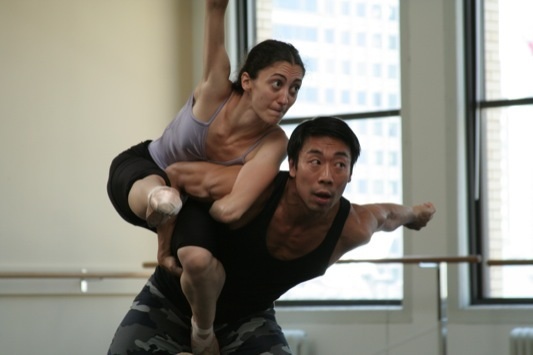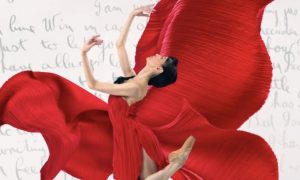By Laura Di Orio
When a dancer steps down from the stage and “hangs up his or her shoes”, it doesn’t always mean an end to a dance-centered career. Many go on to teach, open a studio, direct a company, design costumes, and several choose the route of choreographer. Those who make the shift from dancer to choreographer may find a most freeing, creative outlet to express themselves. And a former life as a dancer just may make that transition smoother and richer.
Dance Informa hears from two established choreographers, both former professional dancers, on how and why they made the jump and what their life as choreographer provides them artistically.
Did you always know you wanted to choreograph? When did those desires begin to surface?
Edwaard Liang, freelance choreographer, USA
www.edwaardliang.com
I never had the thought or desire to choreograph. I had a one-track mind in terms of what I thought I wanted in my career. When I was dancing with Nederlands Dans Theater, I was urged to try my hand creating in their annual choreographic workshops. I had such a great time with the process. I had no clue what I was doing, but loved it.
www.australianballet.com.au/about_us/artistic_staff/stephen_baynes
I always had an interest in it, but I wanted to have a career as a dancer first. It was only after several years as a professional dancer that I began to attempt choreography.
Where are you along this transition from dancer to choreographer? Have you completely shifted?
Edwaard Liang
I have completely shifted from dancer to choreographer. I don’t feel sad about not performing, I think because I’m still a part of this world. I get to take class and feel like a dancer and move when I want to, but don’t have the same pressures I used to before to be perfect. I get to enjoy movement for movement’s sake. Plus, I never got the ‘juice’ or ‘high’ from performing, so it was not hard to leave.
What does your life as a choreographer offer you that life as a dancer has not?

Stephen Baynes, resident choreographer for The Australian Ballet, rehearsing Baynes's "Beyond Bach". Photo by James Braund
Stephen Baynes
As a choreographer, I have relinquished the challenge and fulfillment of performing but have been challenged and fulfilled in a different way by creating my own dances and seeing them interpreted by wonderful artists.
Edwaard Liang
My life as a choreographer has given me more freedom and input into what I want to say. Making ballets are like making mini movies. You get to decide the music, costumes and sets. You feel like you’re able to mould the whole package.
For dancers who want to either delve into choreography or who want to transition completely, what suggestions do you have?
Stephen Baynes
Be very sure that you really feel you have something to say. Try to get as much experience in making dance as you can. It is a very practical endeavour and needs constant practice, but that can be difficult. More than anything else, search for your own voice, which doesn’t always mean that you can be completely original, but at least it is uniquely yours.

Edwaard Liang's "Age of Innocence" performed by Fabrice Calmels and Victoria Jaiani. Photo by Herbert Migdoll
Edwaard Liang
Keep working and creating, whether it’s a big or small project. The only way to get deeper, better and do richer pieces of dance is to get in there and create. Try not to edit. Find your own voice. Enjoy the process and time. This profession is one of the hardest, physically and mentally, so try to find joy in some of the little things that happen. Don’t always wait for the big promotions to celebrate yourself.
What’s next for you as a choreographer?
Edwaard Liang
I finished presenting my work at Fall for Dance at City Center in New York. I am now starting my first full-length ballet – a new production of Romeo and Juliet for Tulsa Ballet and also new works for San Francisco Ballet, Washington Ballet, Joffrey Ballet and a project with Yuan Yuan Tan and myself.
Stephen Baynes
I am busy with commissions until the end of 2012, including a full-length Swan Lake for The Australian Ballet’s 50th anniversary, and hopefully there will be more after that.
Top photo: Edwaard Liang rehearing with Victoria Jaiani. Photo courtesy of Edwaard Liang
















Pingback: Dance Wannabee